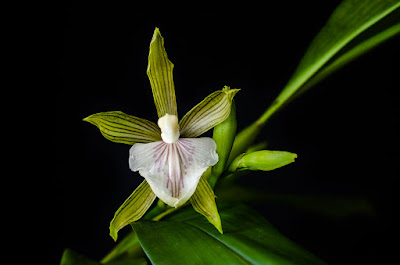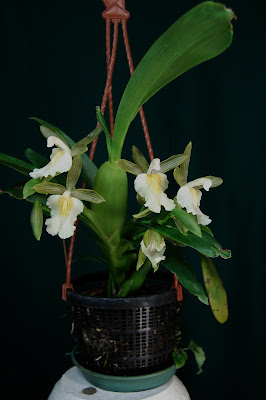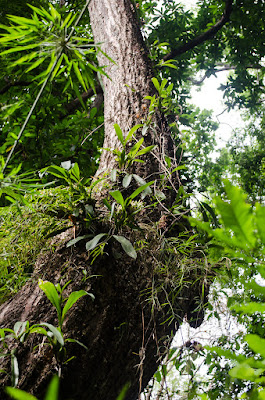Aspasia principissa - Elegant Aspasia blooms in the spring to the fall with nicely fragrant, successively opening, green - yellow flowers of white lip
Aspasia principissa also called as Elegant Aspasia, Aspasia biberiana, Aspasia epidendroides var. principissa, Aspasia rousseauae, Odontoglossum biberianum, Odontoglossum principissa, is a species of the genus Aspasia. This species was described by Heinrich Gustav Reichenbach in 1852.
DESCRIPTION OF ASPASIA PRINCIPISSA - ELEGANT ASPASIA
Aspasia principissa is native to Central America to Colombia, Brazil. It is found growing as epiphyte near the base of trees in lowland tropical rainforests in Brazil North, Colombia, Costa Rica, Nicaragua, Panamá at elevations of 0-1000 meters above sea level.
It is a medium sized, hot growing epiphyte with laterally compressed, to 10 cm long pseudobulbs that are subtended by 2 to 3 foliaceous leaf sheaths. The leaves are up to 40 cm long, apical, subcoriaceous, deciduous, elliptic-lanceolate to oblanceolate, conduplicate at the base.
Elegant Aspasia blooms in the spring to the fall from the axillary, 25 cm long, 4 to 6 flowered inflorescence that arise on a mature pseudobulb. The flowers are nicely fragrant, successively opening, green - yellow, petals and sepals with longitudinal brown stripes, without color variants. The lip is white, turning yellow as the flower ages.
ASPASIA PRINCIPISSA - ELEGANT ASPASIA CARE
Cultural information should only be used as a guide, and should be to be adapted to suit you. Your physical location; where you grow your plants, how much time you have to devote to their care, and many other factors, will need to be taken into account. Only then can you decide on the cultural methods that best suit you and your plants.
Light:
Aspasia principissa needs a light level of 20000-35000 lux. The plants grow best in bright, but slightly diffused light and need protection from direct midday sun.
Temperature:
The average temperature of the summer day is 27-30 ° C, the night 18-20 ° C, which gives a daily difference of 9-11 ° C. The average temperature of the winter day is 27-28 ° C, the night 17-18 ° C, giving a daily difference of 9-11 ° C.
Humidity:
Elegant Aspasia needs the humidity of 75-80% for most of the year, but drops to 70% over a 3-months period in winter and early spring. Too dry air has a negative effect on the development of the plant: its growth is inhibited, and the leaves begin to turn yellow and dry out. The higher temperature, the higher the humidity should be, and the higher the humidity, the more often and longer it is necessary to ventilate the room where the plants are contained, otherwise the probability of rotting and various kinds of fungal diseases. Good air movement is essential while the plants are in leaf and growing.
Substrate, growing media and repotting:
Aspasia principissa can be grown in pots with any good epiphytic mix such as treefern, bark, or osmunda. The plant can also be mounted on cork or treefern slabs. Fixed plants require high humidity and at least daily watering in summer, and may even need to be watered several times a day if the weather is dry and very hot.
Watering:
Elegant Aspasia should be abundantly watered during active growth, but excellent drainage should be ensured. When new growths reach maturity in autumn, the amount of water should be gradually reduced.
Fertilizer:
During the active growth, the plants should be fertilized every week 1/4-1/2 of the recommended dose of fertilizer for orchids. A fertilizer with a high nitrogen content is beneficial from spring to mid-summer, and a fertilizer richer in phosphorus should be used in late summer and autumn.
Rest period:
In winter, the amount of water for Aspasia principissa should be reduced, but they can not remain dry for too long. In general, such conditions can be achieved by fairly regular morning fogging, with light, sparse watering, which should provide the necessary dry rest, but it will not lead to drying of the plant. If pseudobulbs begin to wrinkle, increase the amount of water. Fertilization should be reduced or eliminated until spring, when new growths occur and more watering is undertaken.















COMMENTS